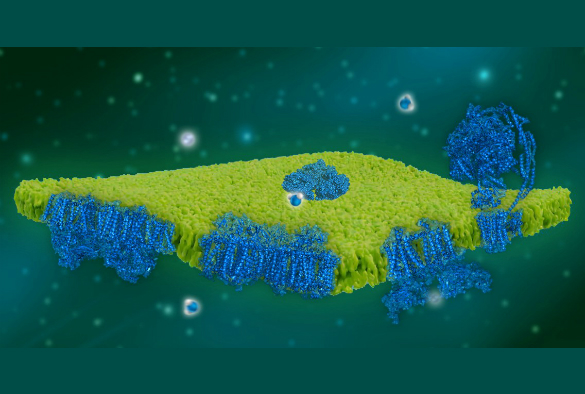
New University of Liverpool research reveals the molecular architecture and physiological dynamics of photosynthetic machinery in bacteria.
Published in Molecular Plant, the work could help inform the advancement of artificial photosynthesis for bioenergy development.
Many living organisms, including some bacteria, algae and green plants, can capture and convert solar light into stored chemical energy, via a process called photosynthesis. Cyanobacteria are among the early microbial pioneers of life to undertake photosynthesis to produce oxygen and have made significant contributions to the earth’s environment for around 3.5 billion years.
Photosynthesis occurs is the specialised intracellular membranes, termed thylakoid membranes, developed in cyanobacteria. These membranes contain the pigments that absorb energy from sunlight and the proteins that carry out the first steps in converting solar energy to chemical energy. There are four major photosynthetic proteins in the thylakoid membrane (photosystem I, photosystem II, cytochrome and ATP synthase). How these proteins are arranged in the membrane and how they interact and work with each other are central questions in photosynthesis research.
Lessons from nature
The new study, led by Royal Society University Research Fellow Dr Luning Liu from the University’s Institute of Integrative Biology, used state-of-the-art genetic and microscopic approaches to reveal the location, organisation and movement of the photosynthetic proteins in the thylakoid membrane, which are essential to their photosynthetic activities.
“We are really excited about this,” said Dr Liu. “Photosynthesis is one of the most important biological events. However, the exact organisation and regulation of the photosynthetic machinery, in any organisms, are not well determined.
“Having the full structural view of the thylakoid membrane at work can help provide vital information for understanding the functioning of photosynthetic systems and manipulating their energy-transduction efficiency and performance.
“Our study provides a general picture of the photosynthetic membrane architecture designed by nature, which could be extended to other organisms, such as algae and higher plants.”
A road towards bioengineering
The researchers say the new work sheds light on potential ways to advance the rational design and engineering of artificial photosynthesis for bioenergy development.
Dr Liu added: “It could also underpin the modification of plant photosynthesis, through genetic approaches, to enhance the conversion of solar energy into biomass and agricultural production,
“In the long-term, we aim to induce the production of similar membrane systems in different kinds of species, giving us a new tool for the generation of new ‘green cell factories’.”
The project was done in collaboration with the University’s Centre for Cell Imaging and researchers from Queen Mary University of London and the University of Manchester. The research was funded by the Biotechnology and Biological Sciences Research Council, a Royal Society University Research Fellowship and a PhD studentship from the Institute of Integrative Biology.
‘Dissecting the native architecture and dynamics of cyanobacterial photosynthetic machinery’ is published in Molecular Plant [DOI: http://dx.doi.org/10.1016/j.molp.2017.09.019]